I confess that I cringe a little bit any time I hear someone say “this fish will not eat corals” or “this fish is reef safe” because, like all wild animals, fish are unpredictable beasts with minds of their own. No matter what a website, magazine, book, or local fish store tells you, no one can predict how a given species of fish will behave in your aquarium. So, despite the fancy title after my name, please, take any statements I make (or anyone else makes) about butterflyfishes with a huge grain of salt. The only thing I can say for certain is that butterflyfishes are less likely to cause problems with corals if they are fed well and given plenty of room and distractions. As you might imagine, a few small fragments of coral in a small tank are much more likely to receive a butterflyfish’s attention than several massive colonies of coral in a larger tank. Although there are plenty of examples of great reef aquariums that break the rules with predatory butterflyfishes, these fish are usually added after the tank has matured for several years to a point where the corals can tolerate a little nipping here and there. With those caveats out of the way, please read on.
Hemitaurichthys polylepis and H. zoster, the Pyramid Butterflyfishes
The fishes in the genus Hemitaurichthys are widely considered to be the safest genus of butterflyfishes to place in a mixed reef aquarium. Only two of the four species in this genus are regularly collected for the aquarium trade–both are commonly called Pyramid Butterflyfish due to the large, somewhat triangular shaped white area on the sides of their bodies. The Yellow Pyramid Butterfly (H. polylepis), often simply called THE Pyramid Butterfly, is found across the tropical Pacific Ocean. It is easily recognized by the bright yellow areas on its head and tail and the aforementioned triangular white patch in the middle of the body. Juveniles have bright yellow faces that turn to a light brown as they mature. The Yellow Pyramid Butterfly is replaced in the Indian Ocean by the Black or Zoster Pyramid Butterfly (H. zoster), which looks like a black and white version of its congener. Due to its more muted coloration and limited range, the Black Pyramid Butterfly is less common in the aquarium trade.
In the wild, Hemitaurichthys spp. are found in large shoals on outer reef slopes where ocean currents deliver abundant plankton. Their diet in the wild consists entirely of plankton, making them a nearly perfect “reef safe” butterfly in captivity. At the Steinhart Aquarium we keep 25 H. polylepis in a mixed reef aquarium and have never witnessed any of them bothering any sessile invertebrates. At any given moment they have their eyes to the sky looking for plankton to eat, and generally do not spend any time at all looking at the substrate for food. If a Hemitaurichthys has caused problems with corals, I have yet to hear of it. The other upsides of these fishes are that they are relatively easy to keep, and get along just fine in groups if the tank is spacious enough. Hemitaurichthys spp. will eventually accept flake, pellet, and just about any other food offered, although at first they may be a bit shy and need enticing with live brine, frozen mysis shrimp, or frozen copepods. They are generally peaceful towards all other fish, with the possible exception of smaller butterflyfishes or angelfishes. H. polylepis and H. zoster may fight if placed together in a smaller aquarium. These fish swim in open water with surging current and abundant food available, so a tank with plenty of swimming room and frequent feedings would be ideal. In terms of their tendency to snack on corals, the Pyramid Butterflyfishes are the best choice for a mixed reef aquarium.
Heniochus diphreutes, the Schooling Bannerfish
There are 8 species in the genus Heniochus which are all easily distinguished from other butterflyfishes by an extremely long first dorsal ray, giving them the common name Bannerfishes; in some cases the filament may extend as long again as the fish is tall. There is only one fish in this genus, the Schooling Bannerfish (H. diphreutes), that is considered relatively safe to include in a coral reef aquarium. H. diphreutes is very easily confused with the Reef Bannerfish (H. acuminatus), a fish that is generally considered a substantial risk to place in a coral reef aquarium. In H. diphreutes, the snout is shorter, the breast is more rounded (Kuiter, 2002), and the back margin of the anal fin is less angled towards the posterior end of the fish when compared to the very similar H. acuminatus. I’d like to say there is one simple and obvious distinguishing characteristic between the two species, but the truth is that the differences in these traits can vary with the age of the fish, as well as variation between individuals. Some individuals may very clearly belong to one species or another while a few individuals may stymie even the most seasoned fishkeepers. My best advice is to buy several good books (see the references at the end of this article) and compare photos of both species to get a good feel for the differences between the two. One easy way to know for sure that you are getting H. diphreutes is to purchase a fish that came from Hawaii, as H. acuminatus does not occur there. Of course, this may be easier said than done. Remember–just because a retailer sells a fish as “the reef safe bannerfish”, or “H. diphreutes” or “Hawaiian caught”, it may not necessarily be the case.
Although a large portion of the diet of H. diphreutes in the wild is zooplankton, these fish will also occasionally graze from the substrate and even act as part time cleaners and pick parasites off of larger fish and elasmobranchs. On rare occasions H. diphreutes may pick at corals, but they are one of the least likely butterflyfishes to do so. The upside of this fish is that it is very easy to keep and will live peacefully in groups in a spacious tank. Unfortunately their tendency to pick parasites can lead these fish to harass certain sharks and rays relentlessly in captivity, but this is not a concern for most reef aquarists. Most individuals will begin feeding on just about anything floating in the water within a few days and readily adjust to captivity.
Chelmon spp., the Banded Butterflyfishes
The Copper Banded Butterfly (Chelmon rostratus) is one of the most commonly seen butterflies in fish stores due largely to its beautiful appearance, but also due to its appetite for pest Aiptasia anemones. When it comes to dealing with Aiptasia, C. rostratus sits right smack dab in the middle of “reef-safety-ness” where we want a butterfly to be–it tends to leave almost all corals alone the vast majority of the time, but has just enough of a hankering for sessile invertebrates that it will (somewhat) regularly prey on Aiptasia. On the one side of this scale are the planktivorous butterflyfishes that likely won’t touch your corals but they won’t touch Aiptasia either (although there are rare exceptions), and on the other side of the scale are the butterflyfishes that will certainly devour Aiptasia but then move right along to snacking on your desirable corals. Okay, so what’s the downside? Unfortunately, these fish do not handle shipping and handling stress well and can be heartbreakingly difficult to adjust to captivity.
Many C. rostratus individuals will perish within a matter of weeks regardless of how well they are treated once the end buyer gets them–poor handling and/or weeks of starvation during the chain of custody stresses them to the point where their immune system and organs just start to shut down. Those that do come in healthy are often very difficult to get eating aggressively, which doesn’t help matters. The location of collection is a very important factor in the health and longevity of C. rostratus in captivity–individuals collected in Australia are generally much healthier than those that come from other areas. There are two Chelmon species that look very similar to the Copper Banded Butterfly called the Marginalis Butterfly (C. marginalis) and the Mueller’s Butterfly (C. muelleri). These two species are restricted to Australian waters (and thus are usually in very good health and adapt much more readily to captivity than most C. rostratus individuals. Australian fish will cost considerably more than fish from other areas, but it is well worth it to get a healthy fish.
The Chelmon spp. use their long tubular snouts to prowl the reef looking for small invertebrate prey. As one might imagine, they hunt down small bristleworms, feather dusters, and tiny brittle stars that they find in small crevices in the reef structure. In captivity, these fish can be difficult to get feeding on frozen foods so it is important to get them eating on something, anything, as quickly as possible. Live tubifex worms, live adult brine shrimp, and live mysis may be good first foods. Another trick I like to use is to chop up prawn into a very fine paste and smear it into the crevices of a small chunk of live rock to simulate their natural prey. Small chunks of live rock with plenty of feather dusters or bristle worms may help tide them over on their natural prey. Some individuals will attack Aiptasia anemones right away while others may take a few months to do so. Once you have gotten a Chelmon sp. feeding reliably on something, try feeding it with a turkey baster for several days or weeks. Once the fish has grown accustomed to this, you can try squirting the food directly into the mouth of a large Aiptasia anemone. If you’ve ever wondered what a fish looks like when it is thinking “that **** just stole my food!” this is one way to find out. This trick can teach them pretty quickly to start nipping at Aiptasia and from there they will figure out on their own to consume them. Once eating well and recovered from the stress of transport after a few months, Chelmon spp. are relatively durable fish that get along well in a peaceful community. In smaller tanks they can be victims of aggression from larger butterflyfishes, angelfishes, or surgeonfish, so their tankmates should be chosen carefully.
Forcipger flavissimus and F. longirostris, the Longnose Butterflyfishes
There are two very similar looking species in the genus Forcipger that can be easily mistaken for one another. Fortunately, both have somewhat similar behavior and requirements in reef aquariums. The Longnose Butterflyfish, sometimes called the Forcepsfish, (F. flavissimus), has the widest range of any butterflyfish, being found throughout the Indian and Pacific Oceans from East Africa to the west coast of Central America (Allen et al, 1998). It is distinguished from the Really (or “Extra”, “Very”, “Super”, or “Crazy Ridiculous”) Longnose Butterflyfish (F. longirostris) by a shorter snout in proportion to its body. The simplest way to distinguish the two species is that F. longirostris has small black spots on a cream background on its chest in the area between the gill plate and the pectoral fin; in F. flavissimus this area is completely cream colored. In the aquarium trade you are much more likely to encounter F. flavissimus than F. longirostris.
Despite their fragile and delicate appearance, the Forcipger spp. are relatively straightforward to acclimate to captivity, although not as easy as the Heniochus spp. Most individuals will accept frozen mysis or shredded clam meat relatively quickly, although they may need some enticing with live adult brine or live mysis. Like the Chelmon spp., they may be enticed to eat by using a chunk of live rock covered with small feather dusters, brittle stars, bristle worms, or with frozen prawn chopped up and smeared into the crevices. F. longirostris has a smaller mouth and so may be a bit more difficult to get eating on larger chunks of food. My experience has been that both species of Forcipger are completely safe with corals, although Scott W. Michael reports that F. flavissimus may occasionally nip at large polyped stony corals, and that F. longirostris is the safer of the two species in reef aquariums (Michael, 2004).
Subgenus Roa or Roaops, the “Tinkeri Complex” Butterflyfishes
The largest genus of butterflyfishes, the Chaetodon spp., includes virtually all of the obligate corallivore butterflyfish that would quickly decimate even large coral colonies in captivity, as well as many other species that are very likely to consume several different large and soft corals. However, there is a subgenus in Chaetodon called Roa (from Allen et al, 1998) or Roaops (from Kuiter, 2002) that is considered “safer”, although not entirely safe, to place in a reef aquarium. The 5 species in the subgenus are all found in deep water, and are thus rare in the aquarium trade and expensive to purchase when they are available. All Roaops spp. can be readily identified from other Chaetodon spp. by a diagonal band that cuts the body in half. The diagonal band is most obvious in the Tinker’s Butterfly (C. tinkeri), and thus the butterflyfishes in this subgenus are also sometimes called the “Tinkeri Complex” (from Michael, 2004). Four of the species, C. tinkeri, C. burgessi, C. declivis, and C. flavocoronatus are restricted to small ranges in the Pacific Ocean, while C. mitratus is restricted to the Indian Ocean.
The Roaops spp. butterflyfishes are most abundant on deepwater reefs where they graze on sessile invertebrates and occasional coral polyps. In captivity, they are generally a risk to keep in mixed coral aquariums but it is a risk many people are willing to take given their extraordinary beauty. Many people report that these species will pick at corals but in mature aquariums this may not be problematic enough to warrant their removal. For example, I kept a C. mitratus that had a curious habit with Tubastrea corals; although I never witnessed it nipping at the adult polyps, it would pick at newly settled polyps that resulted from asexual budding and keep them from opening. If my goal with this exhibit were to showcase a Mitratus Butterfly the nipping would have been an acceptable problem, but instead I wanted to maximize Tubastrea growth. Once I removed the C. mitratus from the aquarium the tiny Tubastrea polyps began to grow considerably.
In captivity the Roaops spp. are generally hardy fish and easy to acclimate to an aquarium diet. Most will readily take frozen mysis or chopped prawn right away. They are also relatively peaceful as butterflyfishes go, although C. mitratus can be particularly aggressive even with unrelated species.
Prognathodes spp., the Deepwater Butterflyfishes
The Prognathodes spp. butterflyfishes inhabit very deep water or subtropical regions where ornamental fish collection is rare; some species are among the rarest and most expensive butterflyfishes that one can purchase for a home aquarium. There are at least 11 species in the genus, with more undiscovered species likely waiting to be found. Only one species, the Caribbean Deepwater Butterfly (P. aculeatus), is relatively common in the aquarium trade. The Bank Butterfly (P. aya) and the closely related Marcella Butterfly (P. marcellae) are somewhat more rare, but can be found in the aquarium trade with some regularity. For the ultra rare fish enthusiast willing to shell out over one thousand dollars for a single fish, there are the French Butterfly (P. guyanensis) and the Orange Margined Butterfly (P. basabei), both of which are only found in extremely deep water. If you are looking to create the ultimate “San Diego Subtropical Biotope” aquarium, the Scythe Butterfly (P. falcifer), the only butterflyfish native to the West Coast of the U.S., can be found in deep water in Southern California and Baja California.
In their natural habitat the Prognathodes spp. butterflyfishes often prey on soft corals and gorgonians and as such are a significant threat to place in a reef aquarium. Many aquarists have reported success with keeping these fish with small polyp stony corals such as Acropora and Montipora, but large polyp stony corals may be picked on. For example, I keep a small P. aya in a 60 gallon reef aquarium with Sinularia, Goniopora, Cespitularia, Lobophytum and Rhodactis corals. Although it has not harmed these corals, it did attack a Trachyphyllia coral to the point of needing to be removed. I also see it prey on small bristleworms, feather dusters, and brittle stars. The upside of its cosmopolitan diet is that it savagely attacks any Aiptasia anemones that are placed in the tank with it.
The Prognathodes spp. are generally found at temperatures quite a bit lower than most reef aquarium owners are happy with. However, the surge of interest in biotope aquariums has led many people to create habitats designed specifically for deepwater fish and corals at the proper temperatures. If you are keeping a Prognathodes butterfly you will want to pay careful attention to the depth, location, and temperature of the species’ range. Although perhaps sold as tropical fish, some species of Prognathodes are decidedly cool water fish that live in water no warmer than 70 degrees (Kuiter, 2002). While keeping a fish in water 5-10 degrees warmer than they ever experience in the wild may not kill it overnight, it is a major stress on the fish that I would not recommend trying if you expect it to lead a long and healthy life in your care. Provided they are kept at the proper temperature, the Prognathodes spp. butterflyfishes are relatively undemanding fish that will go after most prepared aquarium foods with gusto. Live brine or frozen mysis shrimp may be needed to entice them to feed if they are shy at first, but this is generally not a problem. They may not tolerate other Prognathodes spp. butterflyfishes in the same aquarium, but are generally very peaceful to unrelated fishes. More aggressive butterflyfishes or angelfishes may pester and attack them in a smaller aquarium.
This concludes our look at a few interesting species of butterflyfishes that can be kept in reef aquariums. I hope that it’s inspired you to try a butterflyfish in your reef aquarium, and not just to eat your Aiptasia!
Check out the Saltwater Aquarium Butterflyfish Database here
- Allen, G. R., Steene, R., and Allen, M., 1998. A Guide to Angelfishes and Butterflyfishes. Odyssey Publishing, AU.
- Kuiter, R. H., 2002. Butterflyfishes, Bannerfishes, and their relatives: a comprehensive guide to Chaetodontidae and Microcanthidae. TMC Publishing, Chorleywood, UK.
- Michael, S. W., 2004. Angelfishes and Butterflyfishes. TFH Publications, Neptune City, NJ.


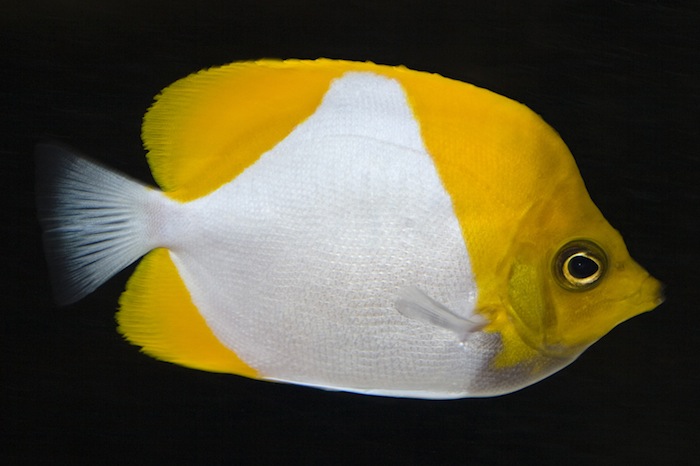
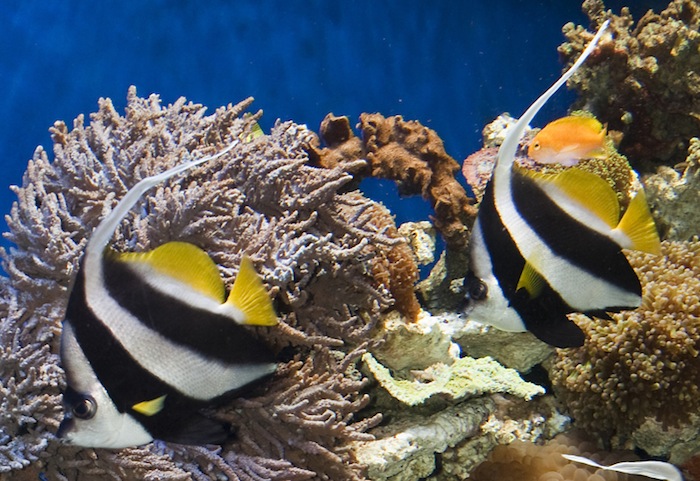
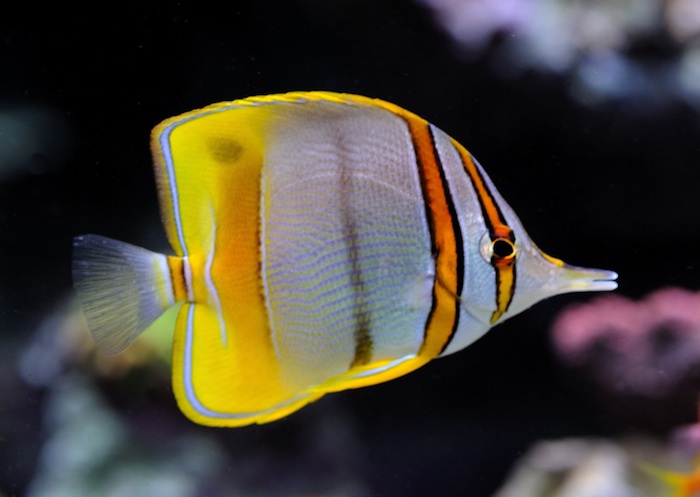
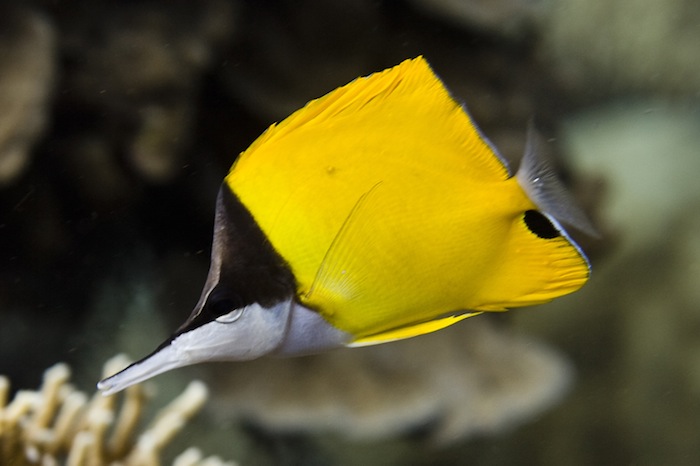
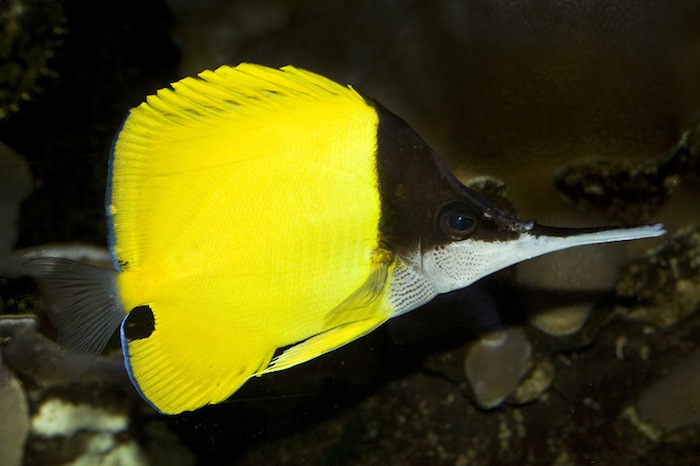
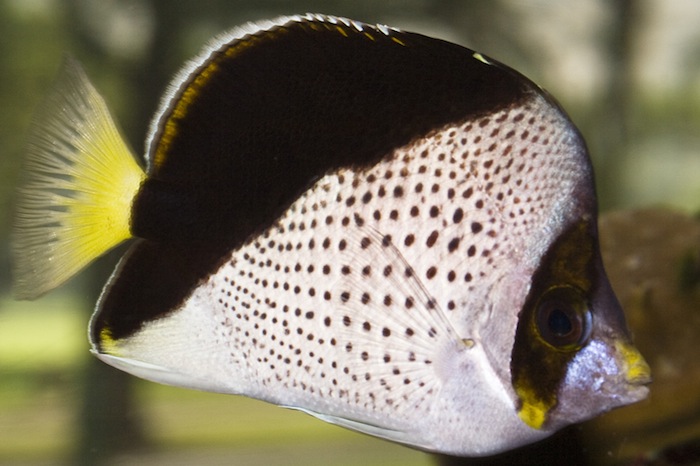
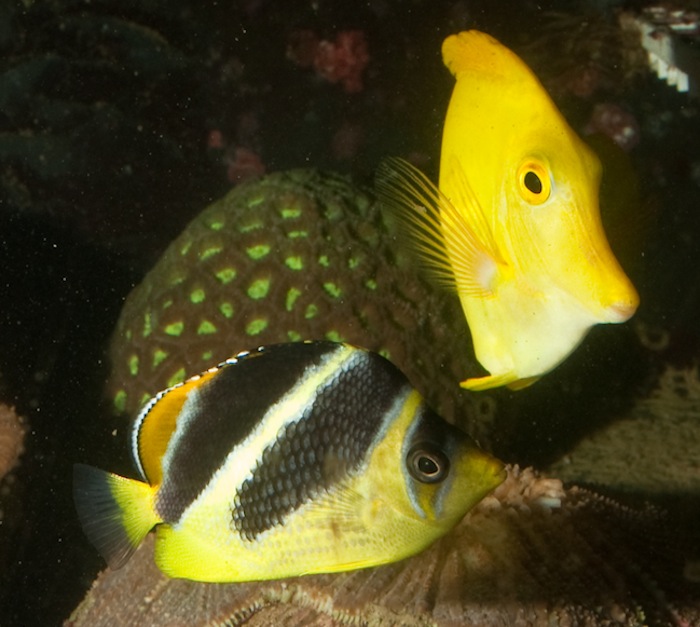
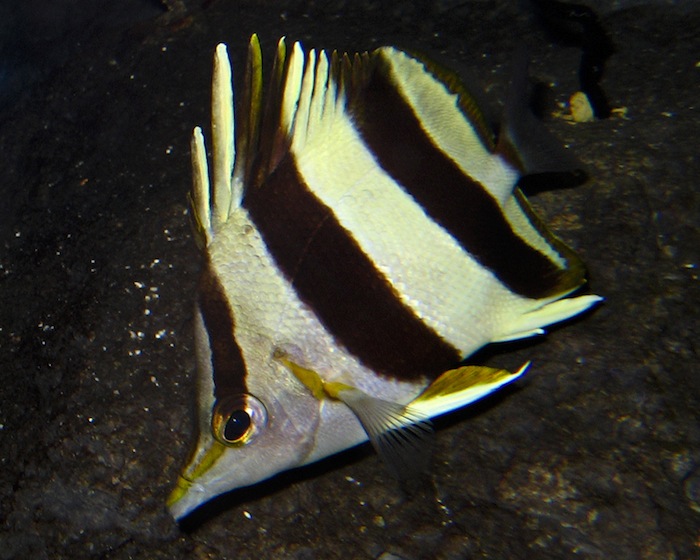
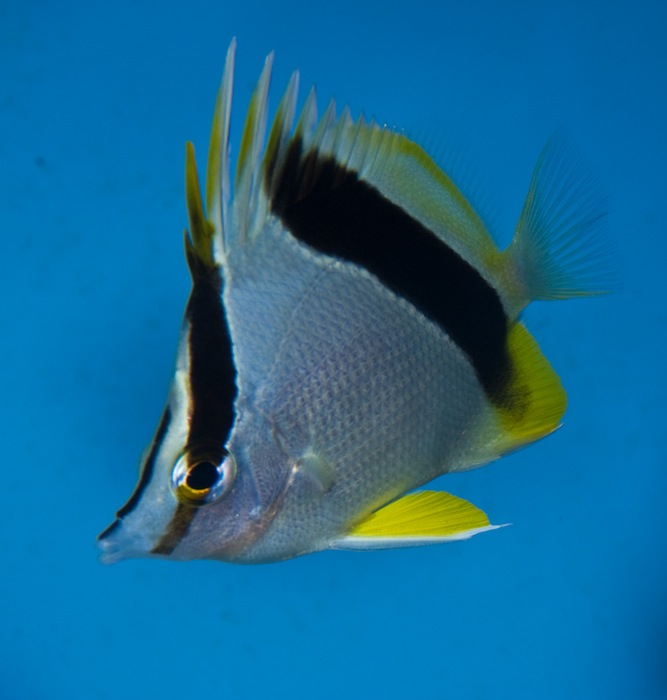

0 Comments